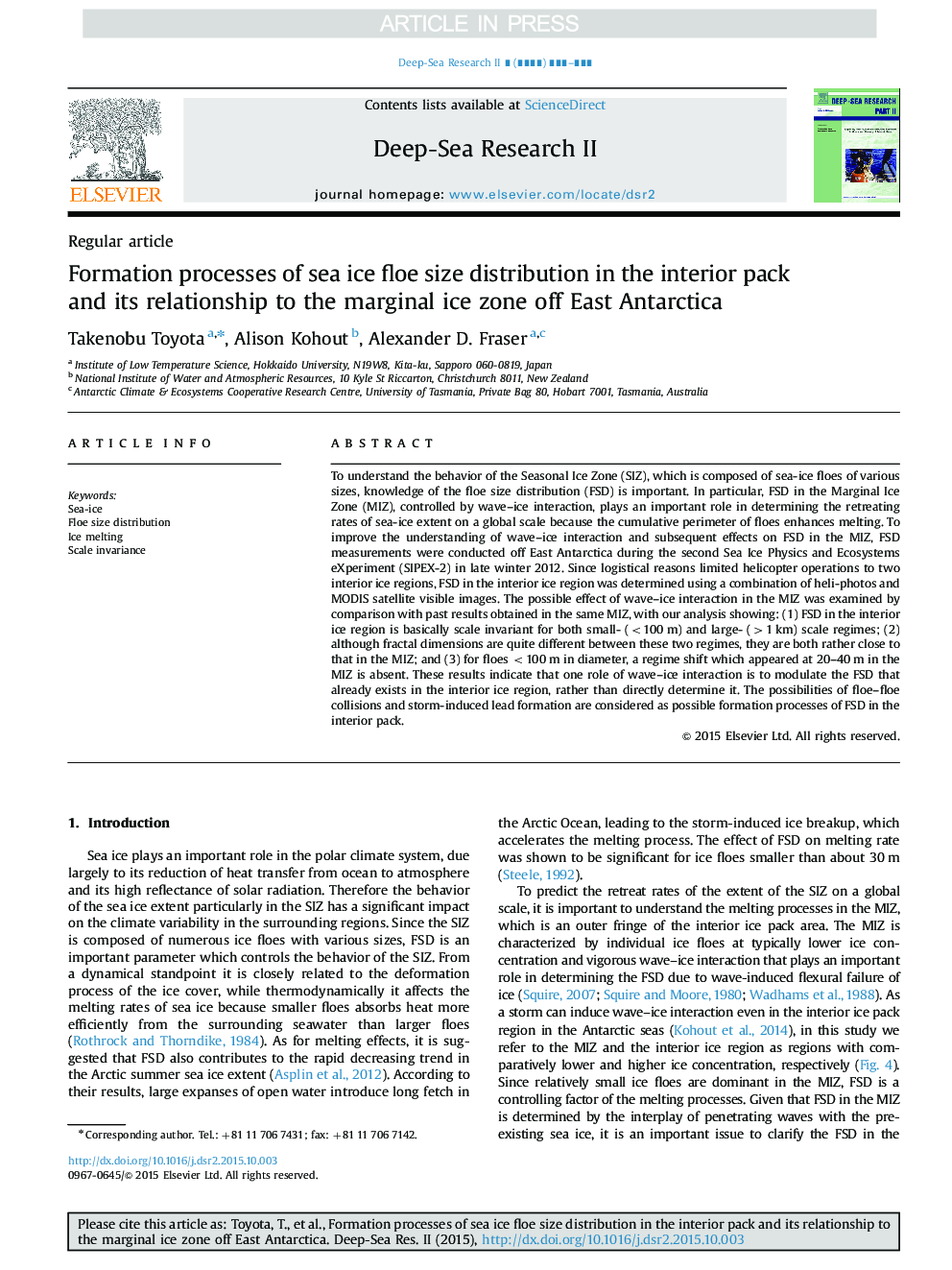| Article ID | Journal | Published Year | Pages | File Type |
|---|---|---|---|---|
| 6383882 | Deep Sea Research Part II: Topical Studies in Oceanography | 2016 | 13 Pages |
Abstract
To understand the behavior of the Seasonal Ice Zone (SIZ), which is composed of sea-ice floes of various sizes, knowledge of the floe size distribution (FSD) is important. In particular, FSD in the Marginal Ice Zone (MIZ), controlled by wave-ice interaction, plays an important role in determining the retreating rates of sea-ice extent on a global scale because the cumulative perimeter of floes enhances melting. To improve the understanding of wave-ice interaction and subsequent effects on FSD in the MIZ, FSD measurements were conducted off East Antarctica during the second Sea Ice Physics and Ecosystems eXperiment (SIPEX-2) in late winter 2012. Since logistical reasons limited helicopter operations to two interior ice regions, FSD in the interior ice region was determined using a combination of heli-photos and MODIS satellite visible images. The possible effect of wave-ice interaction in the MIZ was examined by comparison with past results obtained in the same MIZ, with our analysis showing: (1) FSD in the interior ice region is basically scale invariant for both small- (<100Â m) and large- (>1Â km) scale regimes; (2) although fractal dimensions are quite different between these two regimes, they are both rather close to that in the MIZ; and (3) for floes <100Â m in diameter, a regime shift which appeared at 20-40Â m in the MIZ is absent. These results indicate that one role of wave-ice interaction is to modulate the FSD that already exists in the interior ice region, rather than directly determine it. The possibilities of floe-floe collisions and storm-induced lead formation are considered as possible formation processes of FSD in the interior pack.
Related Topics
Physical Sciences and Engineering
Earth and Planetary Sciences
Geology
Authors
Takenobu Toyota, Alison Kohout, Alexander D. Fraser,
